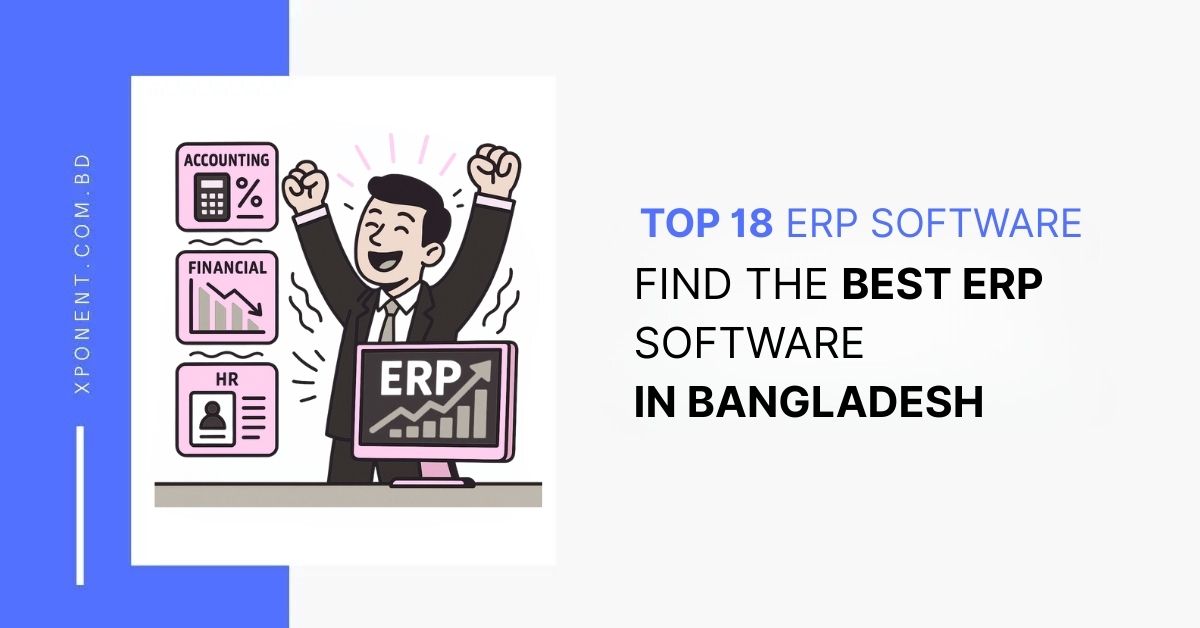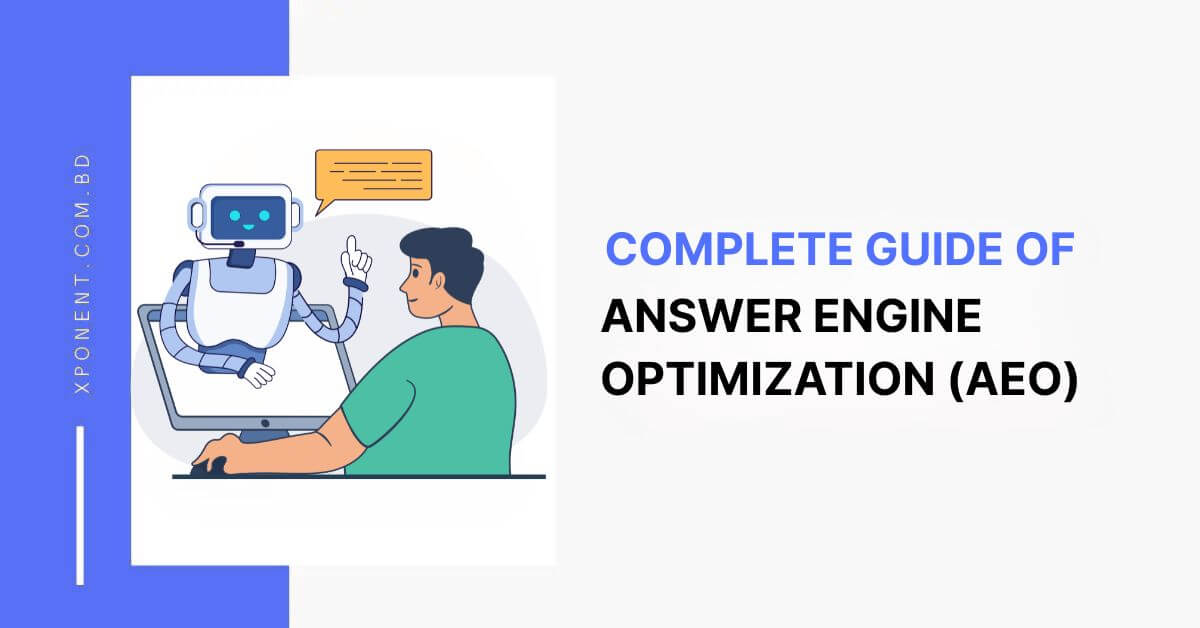Top 10 Manufacturing ERPs in Bangladesh (2025 Buyer’s Guide)
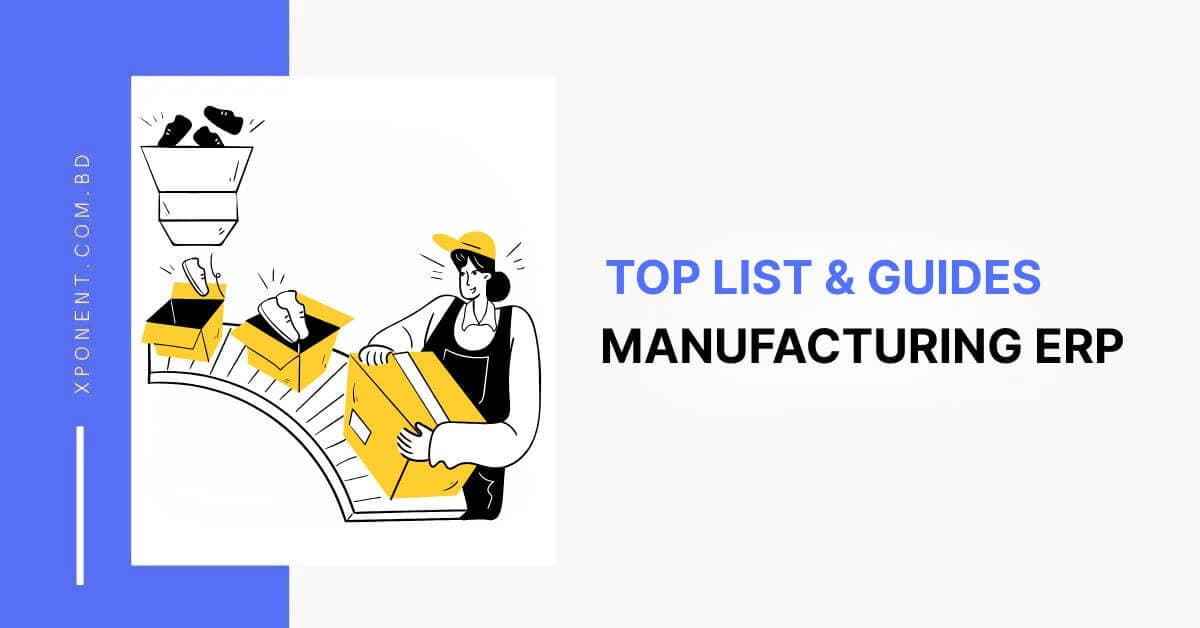
Are you struggling to track inventory accurately? Are production delays costing you money?
For many Bangladeshi manufacturers, these challenges are a daily reality. This is where a manufacturing ERP comes in.
A manufacturing ERP is a single software system that integrates all your key operations from the shop floor to accounting, to give you complete control.
This complete guide will walk you through everything you need to find the perfect solution. We will cover:
- Top 10 Local ERPs: A detailed review of the best options for both small businesses and large enterprises.
- Leading International Options: A list of global leaders like SAP and Oracle.
- Step-by-Step Guides: Practical advice on how to choose a vendor, evaluate cost, and manage implementation.
- Core Features & Benefits: A breakdown of essential modules and the real results you can expect.
- Key Industry Insights: Clear answers to common questions (like MRP vs. ERP) and real-world case studies from Bangladeshi manufacturers.
Top 5 Manufacturing ERPs for Small Businesses in Bangladesh
For small businesses in Bangladesh, top ERP solutions like TallyPrime, bdtask, and deshERP offer affordable, user-friendly systems with core manufacturing functionality.
1. TallyPrime
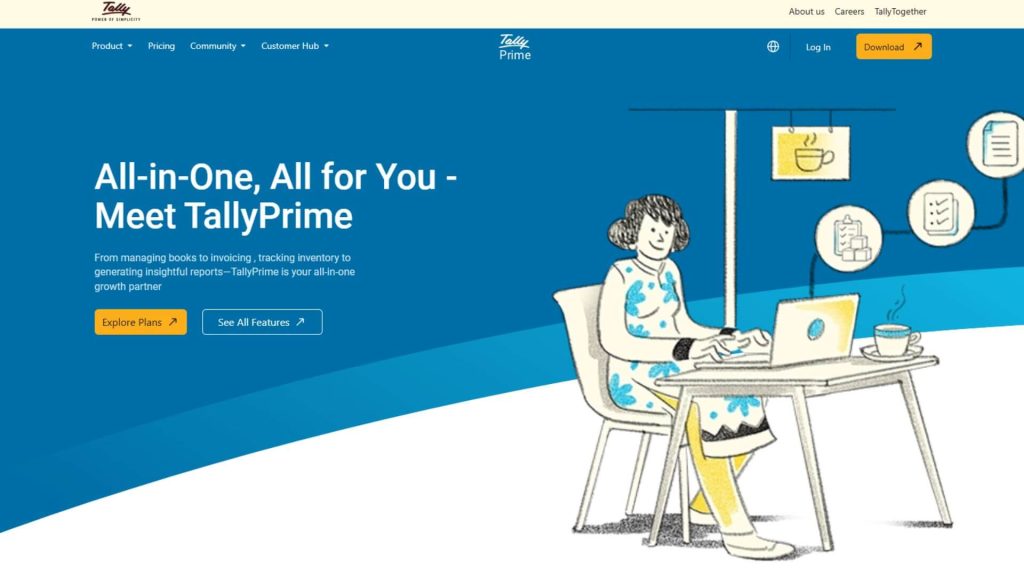
- Pros: It is the standard for local accounting and NBR compliance. It is also highly affordable and widely used.
- Cons: It lacks advanced manufacturing and production planning modules.
- Address: C/O Panache Solutions Pvt. Ltd., Building No. A82, 3rd Floor, Road No.2, Block – A, Niketan, Dhaka-1212
- Phone: +880 1313013031
2. bdtask (In-Factory ERP)
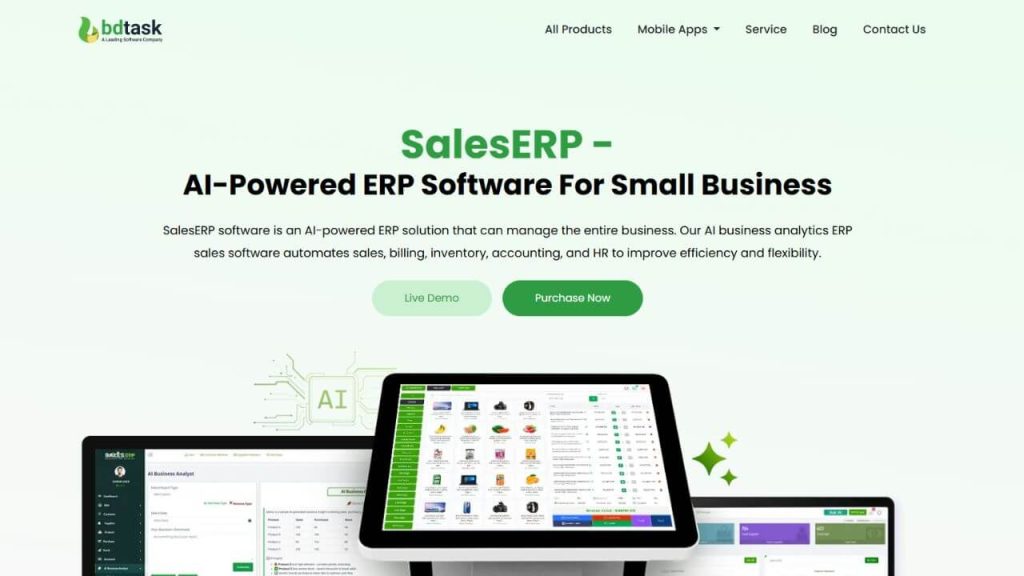
- Pros: An affordable, pre-packaged solution designed for quick, entry-level implementation.
- Cons: Its standardized structure allows for limited customization.
- Address: B-25, Mannan Plaza, 4th Floor, Khilkhet, Dhaka-1229, Bangladesh
- Phone: +8801817584639, +8801857675727
3. deshERP
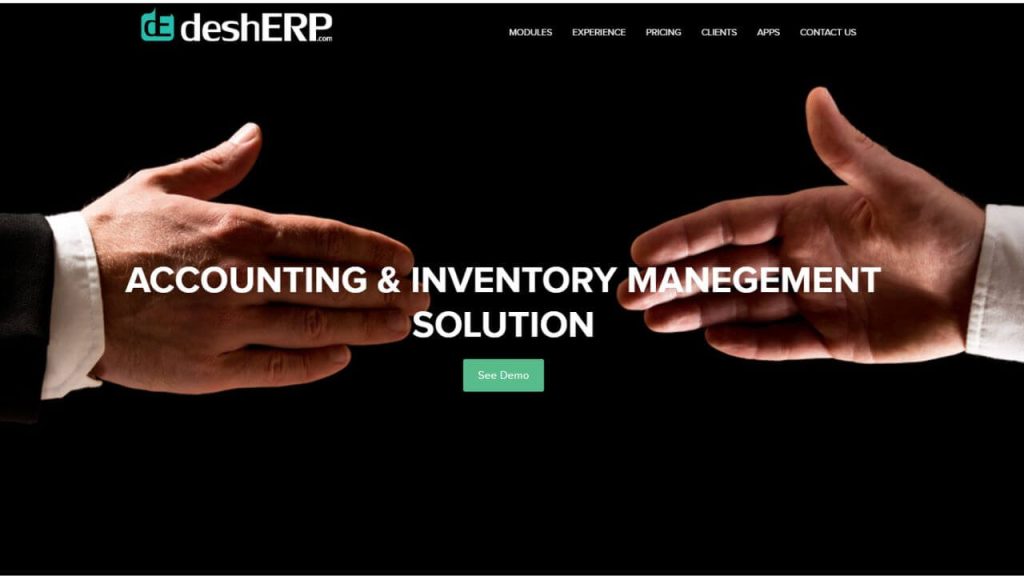
- Pros: Features a simple, user-friendly interface created for local SME operations.
- Cons: It lacks advanced modules and is not built for high-volume scalability.
- Address: 19/A /1 (GF), Uttor Tolarbag, Answar Camp, Mirpur-1, Dhaka, Bangladesh.
- Phone: +8801708538190, +8801708538190
4. PinTechERP
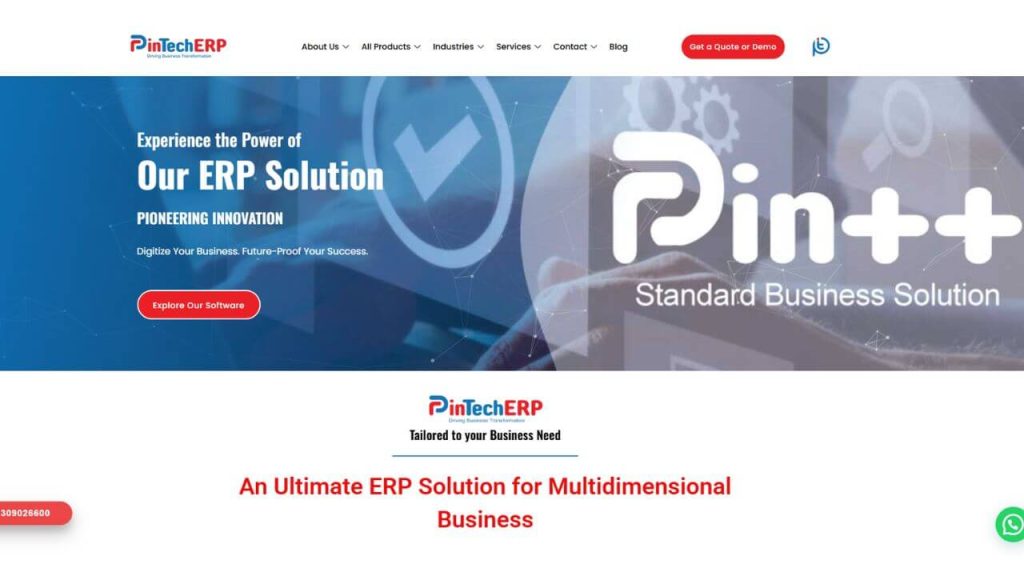
- Pros: A modern, cloud-based platform with a clean and intuitive user interface for SMEs.
- Cons: As a newer market entrant, it has a smaller client base and fewer public case studies.
- Address: 14/A Tejkunipara Rd, Dhaka 1215
- Phone: +8801309026600
5. Amar Solution
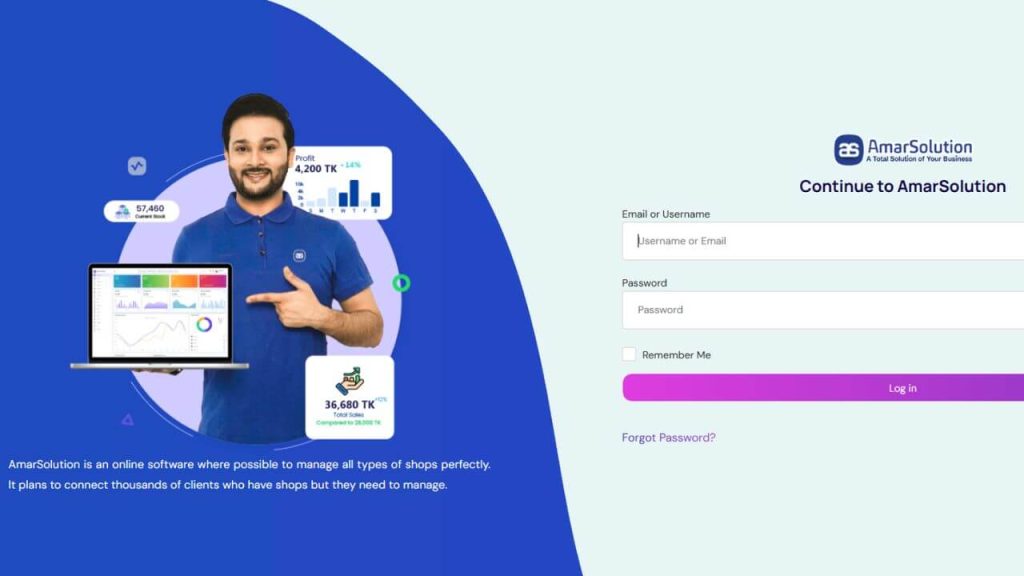
- Pros: Provides essential ERP functions needed to manage core, straightforward business operations.
- Cons: It is not designed to manage businesses with high operational complexity or rapid scaling needs.
- Address: House 51/C, Road 13/B, Sector 3 Uttara, Dhaka-1230, Bangladesh.
- Phone: +880174456931, +8801760807974
Feature Comparison: For Small Business ERPs
These ERPs provide an affordable way to control finances, manage basic operations, and ensure NBR compliance.
| Feature | TallyPrime | bdtask (In-Factory) | deshERP | PinTechERP | Amar Solution |
| Bill of Materials (BOM) | Basic | Basic | Basic | Basic | Basic |
| MRP Capabilities | Limited | Basic | Basic | Basic | Limited |
| Shop Floor Control | Basic | Basic | Basic | Basic | Basic |
| Customization Level | Low | Low | Low | Medium | Low |
| Local Compliance (NBR) | Excellent | Excellent | Excellent | Excellent | Excellent |
Top 5 Manufacturing ERPs for Large Businesses in Bangladesh
The top manufacturing ERPs for large companies in Bangladesh are provided by leading local vendors like Divine IT Limited (PrismERP), Pridesys IT (PrideERP), and Jibika Plexus.
1. Divine IT Limited (PrismERP)
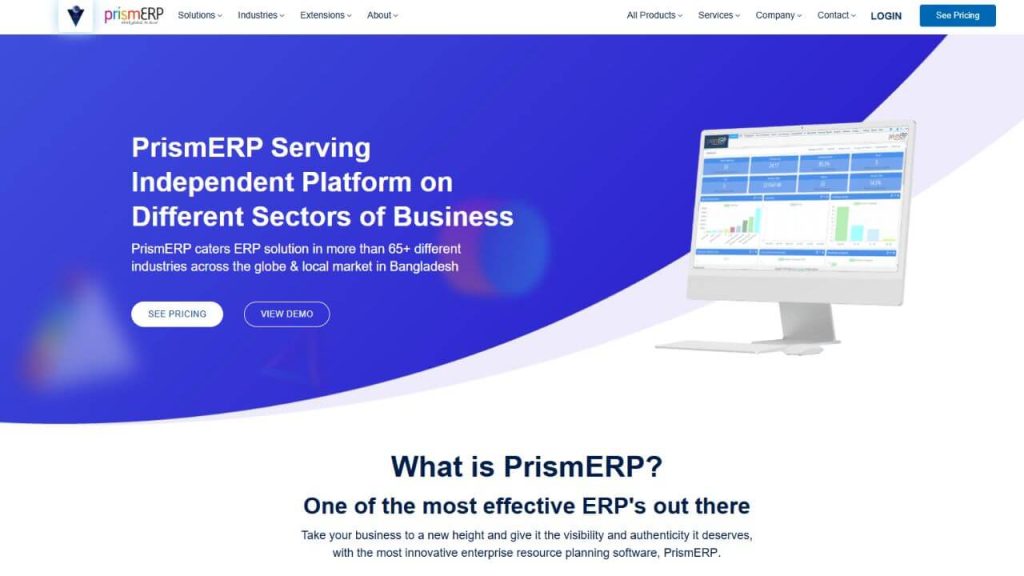
- Pros: A proven, leading local ERP for large enterprises with a comprehensive suite of modules.
- Cons: The pace of adopting cutting-edge global tech trends is slower than that of world leaders.
- Address: Road 12, Sector 10, Uttara Model Town, Dhaka 1230
- Phone: +8801730071010
2. Pridesys IT (PrideERP)
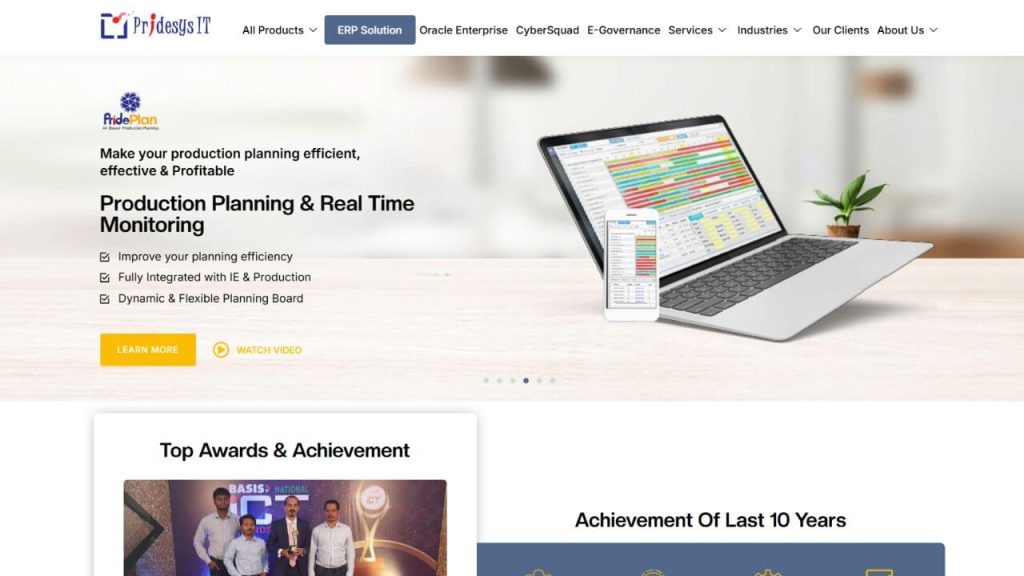
- Pros: Deep industry expertise, especially in garments. Delivers highly customized solutions.
- Cons: Extensive customization results in longer implementation timelines and higher costs.
- Address: Sumona Goni Trade Center, Plot- 2, Level 5 & 6, Panthapath, Kawran Bazar, Dhaka- 1215, Bangladesh.
- Phone: +8801550000003 – 4, 6 – 8
3. Jibika Plexus

- Pros: A powerful, integrated solution for companies prioritizing Human Capital Management (HCM) with ERP.
- Cons: Its manufacturing modules are less specialized than those from a production-focused vendor.
- Address: Ka-48, Abdul Aziz Sarak, Jagannathpur, Vatara, Dhaka-1212
- Phone: +8801977542452
4. Smart Software Ltd (SmartERP)
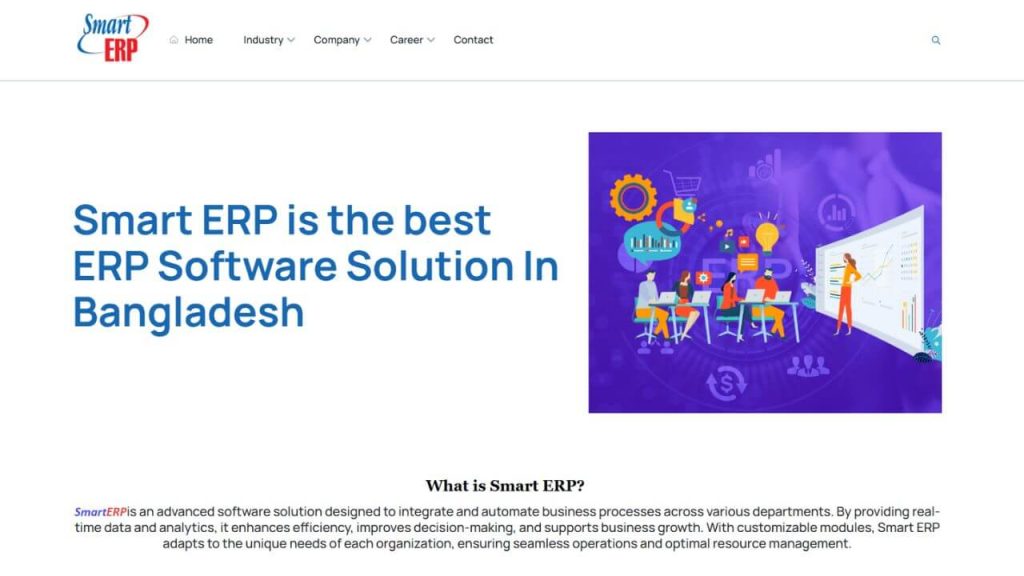
- Pros: An established vendor with a long history of successful implementations in major corporations.
- Cons: The user interface and underlying technology are less modern than newer cloud-native platforms.
- Address: 152/2/N (4th F), Panthapath, Dhaka, Bangladesh
- Phone: +8801844047000, +8801844047001
5. Roopokar ERP
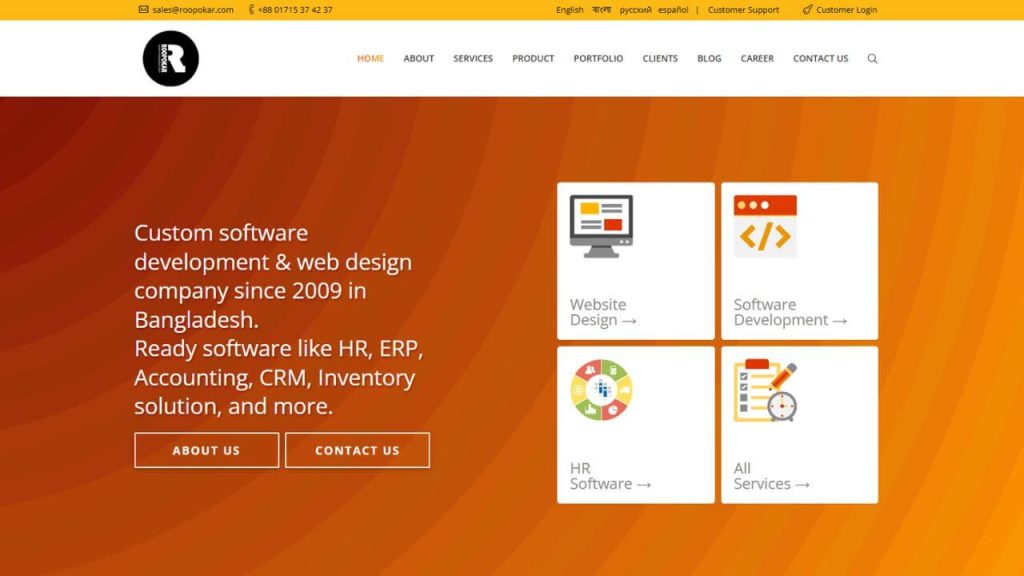
- Pros: Specializes in building bespoke ERPs tailored to the unique processes of large Bangladeshi businesses.
- Cons: Functions as a custom development project, not an off-the-shelf product, increasing project risk.
- Address: Plot 503, Road 05, Block A, Shagufta Housing, Dhaka 1216, Bangladesh
- Phone: +8801715374237
Feature Comparison: For Large Enterprise ERPs
These robust ERPs give large manufacturers the deep operational control needed to optimize production and drive strategic growth.
| Feature | PrismERP (Divine IT) | PrideERP (Pridesys IT) | SmartERP (Smart Software) | Jibika Plexus | Roopokar ERP |
| Bill of Materials (BOM) | Good, multi-level | Good, multi-level | Good, customizable | Good | Custom/Excellent |
| MRP II Capabilities | Good | Good | Good | Medium | Custom/Excellent |
| Shop Floor Control | Good | Good | Medium | Medium | Custom/Excellent |
| Garments-Specific Features | Very Good | Very Good | Good | No | Custom/Excellent |
| Local Compliance (NBR) | Excellent | Excellent | Excellent | Excellent | Excellent |
What Are The Best International Manufacturing ERPs?
SAP, Oracle, and Microsoft Dynamics 365 are among the best international ERP vendors, each with distinct strengths for manufacturing. Here is the best 5 list:
1. SAP
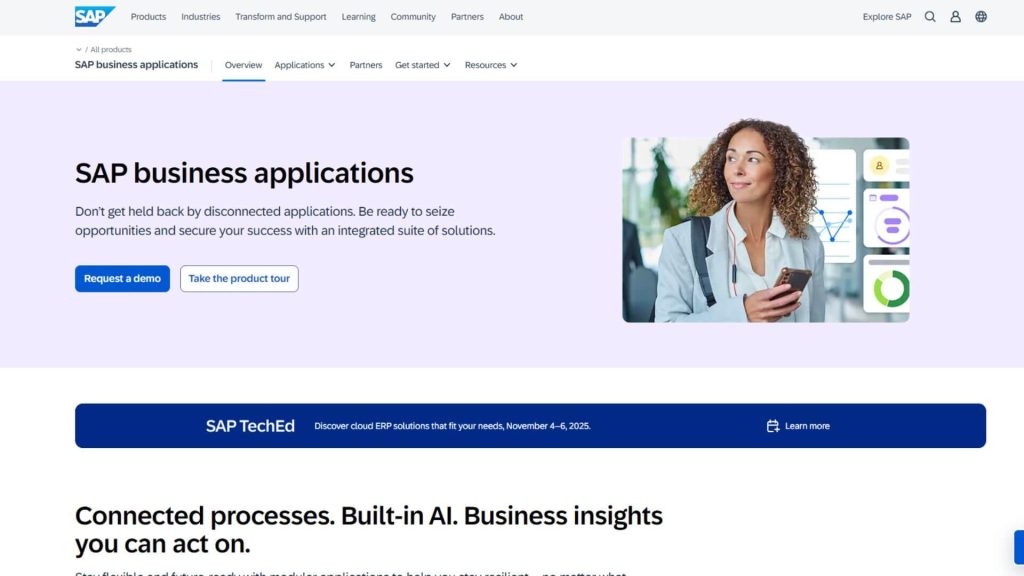
The market leader for large, global corporations with complex needs.
- Pros: Unmatched power and scalability, deep industry-specific features.
- Cons: Very high cost and extremely complex, lengthy implementation.
2. Oracle
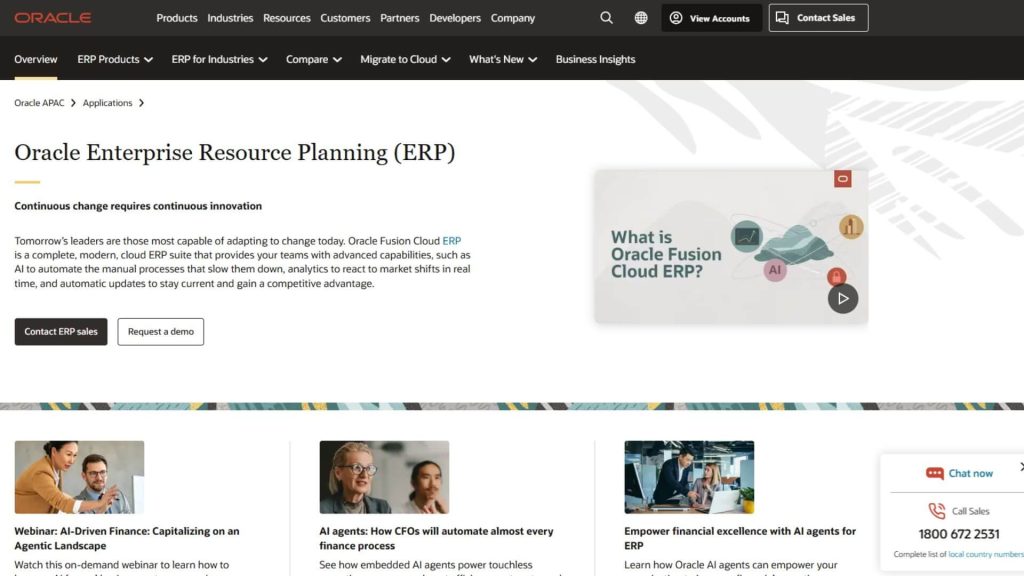
A top-tier competitor to SAP, offering powerful cloud (NetSuite, Fusion) and on-premise solutions.
- Pros: Excellent in finance and supply chain, flexible deployment options.
- Cons: High cost and complex licensing models.
3. Microsoft
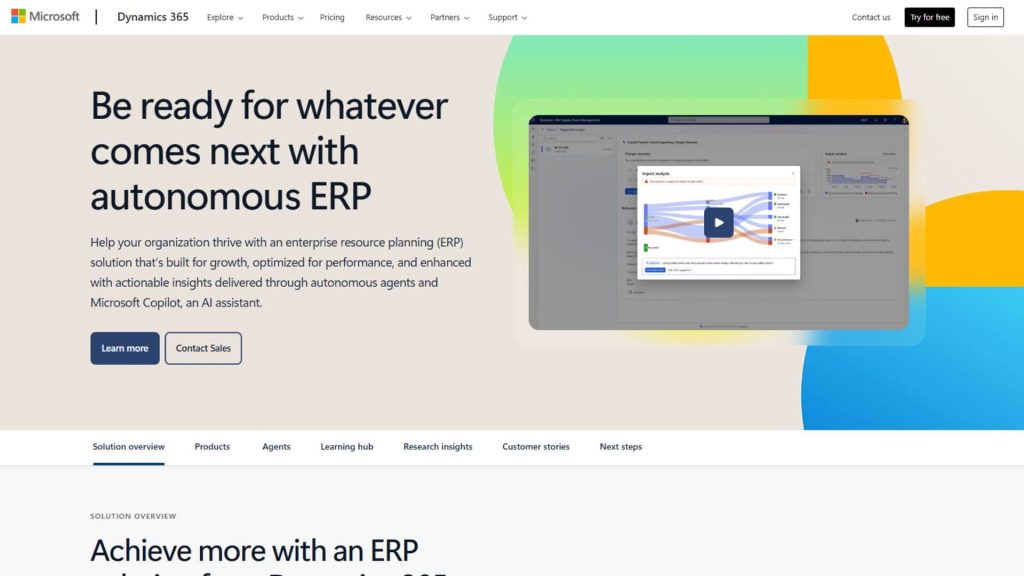
A major player with Dynamics 365, known for its deep integration with the Microsoft ecosystem.
- Pros: Familiar user interface; excellent integration with Office 365 and Power BI.
- Cons: Success heavily depends on the implementation partner; less niche-specific out of the box.
4. Infor
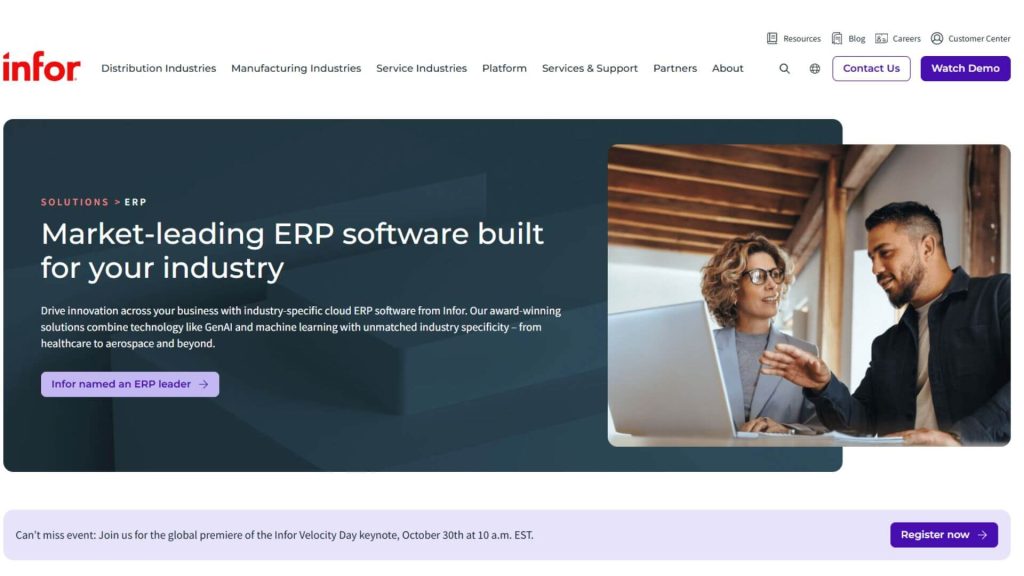
A specialist focused on providing deep, industry-specific solutions that require less customization.
- Pros: Pre-configured for industries like garments or food; modern and user-friendly.
- Cons: Less brand recognition and a smaller global partner network.
5. Epicor
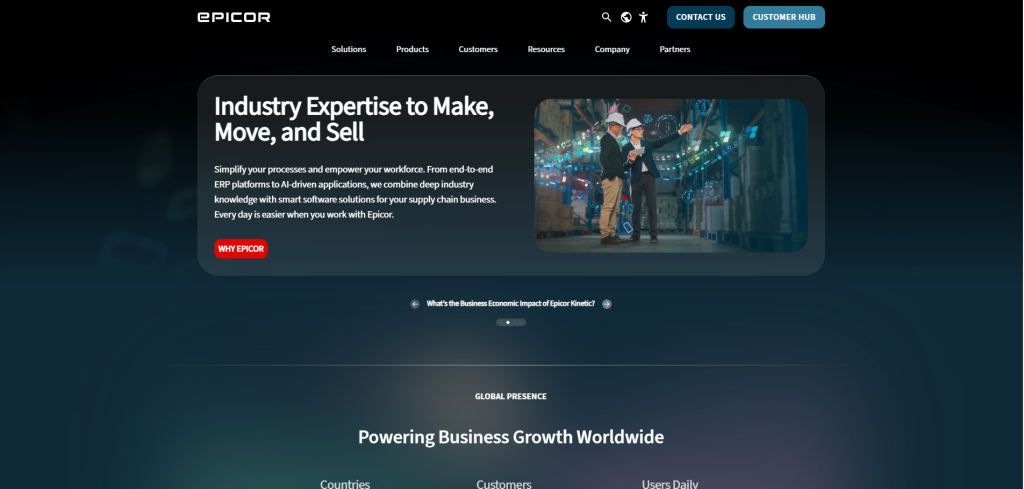
A strong vendor focused specifically on mid-market manufacturers.
- Cons: Non-manufacturing modules (like HR) are less robust than competitors.
- Pros: Excellent control over the factory floor (shop floor management); highly flexible.
How To Choose The Right ERP System?
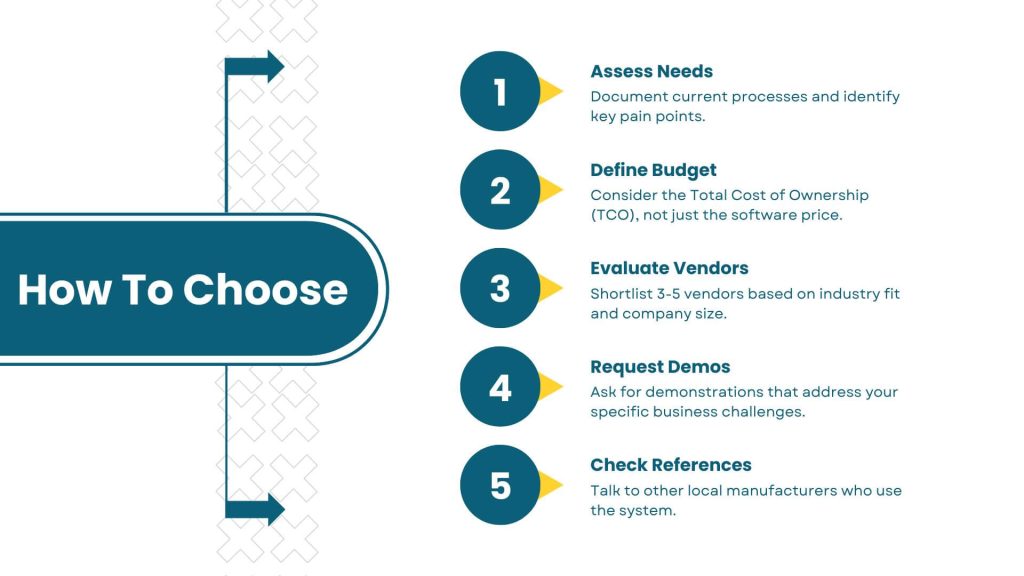
Choosing the right ERP requires a structured evaluation of your business needs, budget, and vendor capabilities.
- Assess Needs: Document current processes and identify key pain points.
- Define Budget: Consider the Total Cost of Ownership (TCO), not just the software price.
- Evaluate Vendors: Shortlist 3-5 vendors based on industry fit and company size.
- Request Demos: Ask for demonstrations that address your specific business challenges.
- Check References: Talk to other local manufacturers who use the system.
How to Evaluate the Cost and ROI of a Manufacturing ERP?
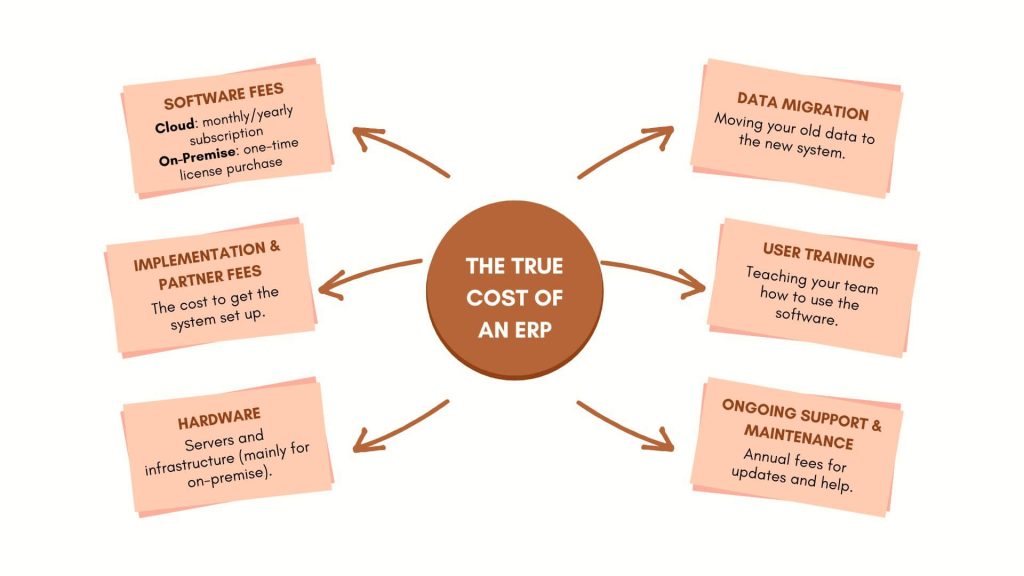
Evaluating an ERP involves understanding its total cost and quantifying its potential return on investment through operational improvements.
Manufacturing ERP cost
- Subscription (Cloud): A recurring fee (OpEx) that includes software, maintenance, and support. Lower initial cost.
- Perpetual License (On-premise): A large, one-time upfront software cost (CapEx), plus annual maintenance fees.
TCO(Total Cost of Ownership) includes software licenses, server hardware (for on-premise), implementation partner fees, data migration, user training, and ongoing support.
Measuring Manufacturing ROI
ROI is measured by tracking improvements in key metrics. Examples include a 10% increase in production output or a 50% reduction in material scrap costs.
What Are The Best Practices for Maximizing ERP ROI?
- Define clear, measurable project goals before starting.
- Invest heavily in user training and change management.
- Standardize business processes to align with ERP best practices.
- Use the ERP’s analytics tools for data-driven decision-making.
- Treat the ERP as a continuous improvement tool, not a one-time project.
How To Manage an ERP Implementation from Start to Finish?
Successful ERP implementation management follows a structured methodology from planning to post-launch support.
What Are The Common ERP Implementation Strategies?
- Big Bang: All modules go live at once. High risk, fast potential ROI.
- Phased Rollout: Implement modules or business units sequentially. Lower risk, longer timeline.
- Parallel Adoption: Run old and new systems simultaneously. Safest but most resource-intensive.
What Are The Key Steps for Successful ERP Implementation?
- Discovery & Planning: Form a project team and define the scope.
- Design & Configuration: Map business processes to the ERP system.
- Data Migration: Cleanse and transfer master data.
- Testing: Rigorously test the system to find and fix issues.
- Training: Train all end-users on their specific roles.
- Go-Live: Launch the new system.
- Post-Go-Live Support: Provide ongoing support to resolve issues.
What are the Key Benefits of Manufacturing ERP?
An ERP system provides tangible benefits by integrating and optimizing core business functions.
1. Better Factory Operations
- Less Manual Work: It automates daily tasks, which reduces mistakes.
- Faster Production Speed: It helps you make products faster and meet deadlines.
- Better Product Quality: It tracks quality at every step, leading to fewer defects.
- Reduced Waste and Scrap: It helps you use the right amount of material, cutting down on waste.
- Fewer Machine Breakdowns: It schedules machine maintenance to prevent unexpected stops.
- Easy Product Tracking: You can track any part or product from start to finish.
2. Smarter Money and Materials
- Lower Day-to-Day Costs: It finds ways to save money on materials, labor, and operations.
- Less Money Tied Up in Stock: It helps you keep just the right amount of inventory on hand.
- Better Use of People and Machines: It ensures your staff and equipment are always working efficiently.
- Improved Supplier Control: It manages supplier orders and performance in one place.
3. Clearer Data and Decisions
- One Source of Truth: Everyone in the company uses the same, real-time data.
- Know Your True Product Costs: It accurately calculates how much it costs to make each item.
- Faster, Easier Reporting: You can create business reports in minutes, not hours.
- More Accurate Forecasting: It helps you predict future sales and material needs better.
4. Happier Customers and Business Growth
- Happier Customers: On-time deliveries and better quality lead to more satisfied customers.
- Better Order Accuracy: It makes sure every customer order is correct and complete.
- Easier to Meet Regulations: It keeps the records you need for audits and compliance.
- Grows With Your Business: The system can handle more work as your company gets bigger.
- Improved Teamwork: All departments can see the same information, so they work together better.
What are the Core Features or Modules of Manufacturing ERP?
Manufacturing ERPs are composed of several integrated modules that manage different aspects of the business, broken down into key functional areas.
1. Production and Planning
This core area manages how products are made.
- Bill of Materials (BOM): Defines the “recipe” for a product, listing all raw materials and components.
- Material Requirements Planning (MRP): Calculates the material needed to prevent shortages.
- Production Scheduling & Shop Floor Control: Creates schedules and tracks work orders on the factory floor.
2. Inventory and Supply Chain Management (SCM)
This area manages the flow of materials and goods.
- Inventory Management: Provides real-time tracking of raw materials, Work-in-Progress (WIP), and finished goods.
- Lot Traceability: Tracks specific batches of product, crucial for quality control.
- Procurement: Manages the entire purchasing process, from requisitions to vendor payments.
3. Quality, Finance, and CRM
This area connects operations to business management.
- Quality Control: Manages quality standards, inspections, and compliance with standards like ISO or DGDA.
- Financials and Costing: Integrates operational data with the general ledger and provides accurate product costing.
- CRM (Customer Relationship Management): Manages sales orders, customer data, and communication.
4. Analytics, Platform, and Other Modules
These modules provide support and intelligence across the system.
- Analytics and Reporting: Offers dashboards and tools to analyze business performance.
- Customization and Scalability: The ability to adapt the system to unique processes and grow with the company.
- Plant Maintenance: Schedules and tracks maintenance on machinery to minimize downtime.
- Human Capital Management (HCM): Manages payroll, employee records, and time tracking.
- Document Management: A central repository for critical business documents.
How Long Does ERP Implementation Take?
Implementation can take from 3-9 months for small businesses and 12-24+ months for large enterprises, depending on complexity.
What is The Difference Between Manufacturing MRP and Generic ERP?
While a generic ERP handles standard business functions, a manufacturing ERP contains specialized modules for production. These include BOM, shop floor control, and quality management, which are not present in a generic system.
What is The Difference Between MRP and ERP?
MRP and ERP are related, but they cover different areas of a business. Think of it as a series of steps.
- MRP (Material Requirements Planning) was the original system. It focused only on one thing: planning the raw materials needed for production.
- MRP II (Manufacturing Resource Planning) was the next step. It included all of MRP’s material planning, but added planning for the factory’s capacity, like machines and people.
- ERP (Enterprise Resource Planning) is the final, complete system. It includes everything from MRP II and also connects all other business departments, like finance, sales, and human resources, into a single platform.
What Are Some Manufacturing ERP Case Studies?
1. Siraj Cycle Industries
Siraj Cycle Industries, a leading manufacturer of bicycle parts, utilizes ERPNext software. This system automated their manufacturing and sales. As a result, the company wasted 30% less time and cut costs by 28%.
2. Beximco Pharmaceuticals
Beximco Pharmaceuticals is a major medicine exporter in Bangladesh. They adopted an ERP system early on to manage their large operations. The system helps them handle many products and a complex supply chain. This has been key to their global growth and success.
A Concluding Summary
This guide has detailed manufacturing ERP systems for businesses in Bangladesh, covering top local and international vendors, core features, and implementation strategies. A well-chosen ERP is a strategic asset that drives efficiency, provides critical visibility, and builds a foundation for sustainable growth in a competitive landscape.
